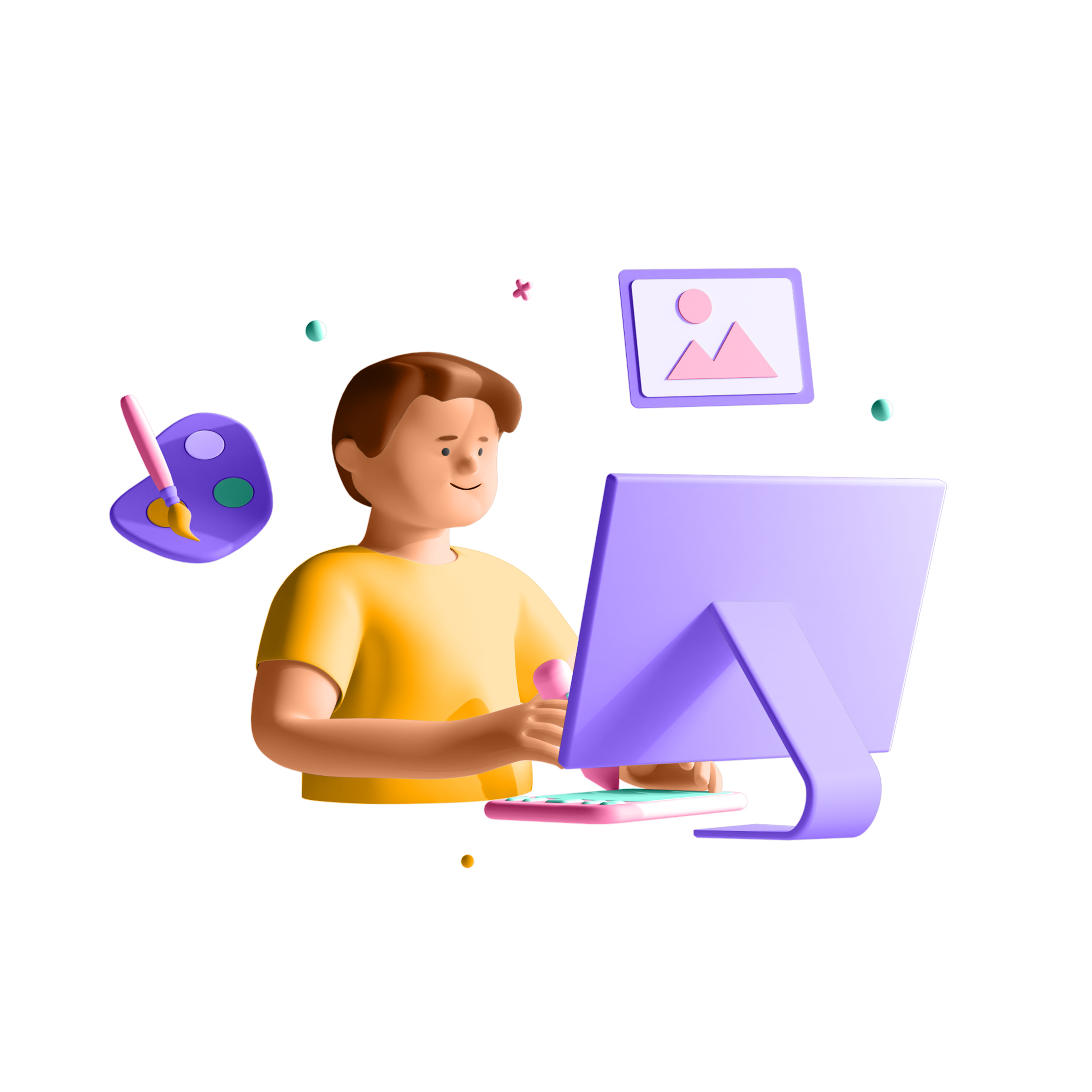
Introduction
Are you fascinated by the world of digital art? Do you have a passion for creating stunning visuals and immersive experiences? If so, becoming a 3D artist might be the perfect path for you. In this article, we will guide you through the steps to embark on a journey towards becoming a skilled 3D artist. From acquiring the necessary skills to building a strong portfolio, we will explore the essential elements that will help you succeed in this exciting field.
Table of Contents
- Understanding the Role of a 3D Artist
- Developing a Strong Foundation
- Mastering Traditional Art Techniques
- Learning the Fundamentals of 3D Graphics
- Exploring Different 3D Software
- Specializing in a Niche
- Character Modeling and Animation
- Environment and World Building
- Product Visualization
- Building Your Skill Set
- Sculpting and Modeling
- Texturing and Shading
- Rigging and Animation
- Lighting and Rendering
- Creating Your Portfolio
- Showcasing Your Best Work
- Highlighting Your Skills and Specialization
- Demonstrating Your Workflow
- Networking and Collaboration
- Engaging with the 3D Community
- Attending Events and Workshops
- Collaborating with Other Artists
- Seeking Employment Opportunities
- Freelancing vs. Full-Time Positions
- Building a Strong Online Presence
- Applying for Jobs and Internships
- Continuous Learning and Growth
- Staying Updated with Industry Trends
- Exploring New Techniques and Tools
- Experimenting and Pushing Your Limits
Understanding the Role of a 3D Artist
Before diving into the world of 3D artistry, it’s important to understand the role of a 3D artist. A 3D artist is responsible for creating digital three-dimensional models, textures, and animations. They bring life to virtual worlds, characters, and objects by utilizing various software and artistic skills. Whether it’s for video games, movies, architecture, or advertising, 3D artists play a crucial role in the creative process.
Developing a Strong Foundation
To become a proficient 3D artist, it’s essential to develop a strong foundation in both traditional art techniques and digital graphics.
Mastering Traditional Art Techniques
Start by honing your skills in drawing, sketching, and painting. Understanding concepts such as composition, color theory, and perspective will give you a solid basis for creating visually appealing 3D artwork.
Learning the Fundamentals of 3D Graphics
Familiarize yourself with the principles of 3D graphics, including geometry, topology, and anatomy. Gain a deep understanding of how light interacts with objects and how to create realistic textures and materials.
Exploring Different 3D Software
There is a wide range of 3D software available, each with its own strengths and specialties. Explore popular software such as Autodesk Maya, Blender, and ZBrush to find the one that suits your workflow and artistic style the best.
Specializing in a Niche
While having a broad understanding of 3D art is valuable, specializing in a niche can make you stand out from the crowd and enhance your career prospects.
Character Modeling and Animation
If you have a passion for bringing characters to life, specializing in character modeling and animation can be a rewarding path. Dive deep into character design, anatomy, rigging, and animation techniques to create captivating and believable characters.
Environment and World Building
For those interested in crafting immersive worlds, specializing in environment and world building is an excellent choice. Learn how to create realistic landscapes, architectural elements, and atmospheric effects to transport viewers to extraordinary places.
Product Visualization
If you have an eye for detail and enjoy showcasing products in a visually appealing way, specializing in product visualization can be a lucrative career path. Master the art of creating stunning product renders and visualizations that effectively communicate the features and benefits of various products.
Building Your Skill Set
Once you’ve chosen your specialization, it’s crucial to build a diverse skill set that encompasses various aspects of 3D artistry.
Sculpting and Modeling
Learn the art of sculpting organic and inorganic objects using software like ZBrush or Mudbox. Develop your skills in creating detailed 3D models that capture the essence and intricacies of your subject matter.
Texturing and Shading
Understand the process of creating realistic textures and materials that breathe life into your 3D models. Master the techniques of UV unwrapping, texture painting, and shader creation to achieve stunning visual results.
Rigging and Animation
Acquire the knowledge of rigging, which involves creating a skeletal structure for characters and objects to enable realistic movements. Learn animation principles and techniques to make your creations come alive through fluid and convincing motion.
Lighting and Rendering
Explore the art of lighting and rendering to enhance the mood and atmosphere of your 3D scenes. Understand how different lighting setups and rendering engines can impact the final look of your artwork.
Creating Your Portfolio
Building an impressive portfolio is essential for showcasing your skills and attracting potential clients or employers.
Showcasing Your Best Work
Carefully curate your portfolio to include your best and most representative pieces. Choose a variety of works that highlight your skills and demonstrate your range as a 3D artist.
Highlighting Your Skills and Specialization
Clearly communicate your areas of expertise and specialization in your portfolio. This will help potential clients or employers understand your strengths and consider you for relevant projects.
Demonstrating Your Workflow
Include behind-the-scenes shots, wireframes, and work-in-progress images to demonstrate your workflow and the creative process behind your artwork. This can give insight into your problem-solving abilities and attention to detail.
Networking and Collaboration
Building a strong network within the 3D community is invaluable for professional growth and collaboration opportunities.
Engaging with the 3D Community
Join online forums, social media groups, and communities dedicated to 3D art. Engage in discussions, seek feedback, and share your work to receive valuable insights and connect with like-minded artists.
Attending Events and Workshops
Participate in industry events, conferences, and workshops to expand your knowledge and network with professionals in the field. These events provide valuable opportunities for learning, inspiration, and building relationships.
Collaborating with Other Artists
Collaborate with other artists on projects or join teams working on larger-scale productions. Collaborative experiences can help you learn new techniques, gain exposure, and create impactful art through combined efforts.
Seeking Employment Opportunities
When you feel confident in your skills and have built a strong portfolio, it’s time to explore employment opportunities.
Freelancing vs. Full-Time Positions
Consider whether you want to work as a freelancer or seek full-time employment. Freelancing offers flexibility and autonomy, while full-time positions provide stability and potential career growth within a company.
Building a Strong Online Presence
Establish an online presence by creating a professional website or portfolio and showcasing your work on social media platforms like ArtStation or Behance. A strong online presence increases your visibility and helps potential clients or employers discover your talent.
Applying for Jobs and Internships
Browse job boards, company websites, and online platforms specializing in creative jobs to find relevant opportunities. Tailor your applications to highlight your skills, specialization, and experience to increase your chances of success.
Continuous Learning and Growth
To thrive as a 3D artist, it’s crucial to embrace a mindset of continuous learning and growth.
Staying Updated with Industry Trends
Keep up-to-date with the latest advancements and trends in the field of 3D artistry. Follow industry publications, blogs, and social media accounts to stay informed about emerging techniques, software updates, and artistic styles.
Exploring New Techniques and Tools
Experiment with new techniques, tools, and software to expand your skill set and stay ahead of the curve. Embracing innovation and pushing your artistic boundaries can lead to exciting breakthroughs in your work.
Experimenting and Pushing Your Limits
Don’t be afraid to step out of your comfort zone and explore unconventional approaches to 3D art. Experimentation fosters creativity and allows you to develop a unique artistic voice.
Conclusion
Becoming a 3D artist requires dedication, continuous learning, and a passion for bringing imagination to life in the digital realm. By mastering the necessary skills, specializing in a niche, building a strong portfolio, and networking with fellow artists, you can carve out a successful career in the ever-evolving world of 3D artistry.
FAQs (Frequently Asked Questions)
Q: How long does it take to become a 3D artist?
The time it takes to become a 3D artist can vary depending on the individual’s dedication, prior experience, and learning resources. Generally, it takes several months to a few years to acquire the necessary skills and build a strong portfolio.
Q: Is it necessary to have a formal education to become a 3D artist?
While a formal education in 3D art or a related field can provide a solid foundation, it is not a strict requirement. Many successful 3D artists are self-taught and have honed their skills through online tutorials, workshops, and practice.
Q: Which software should I learn as a beginner 3D artist?
As a beginner, it’s recommended to start with user-friendly software like Blender or Autodesk Maya. These programs offer a wide range of learning resources, tutorials, and a supportive community.
Q: Can I become a 3D artist part-time?
Yes, you can pursue a career as a 3D artist on a part-time basis, especially if you choose to work as a freelancer. However, keep in mind that building a strong portfolio and establishing yourself in the industry may require dedicated time and effort.
Q: Are there job opportunities for 3D artists?
Yes, there are job opportunities for 3D artists in various industries, including gaming, animation, film production, advertising, and architecture. With the increasing demand for immersive digital experiences, the prospects for 3D artists are promising.


















Leave a Comment